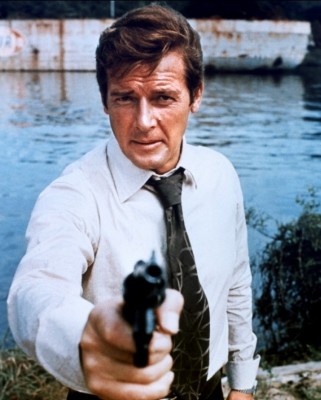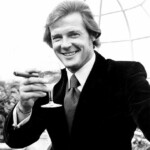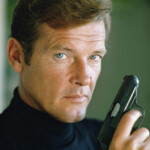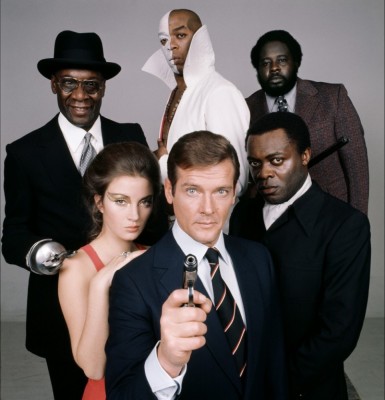 The year 2023 will mark an incredible 50 years since the release of Live and Let Die, which had its UK opening at the Odeon Leicester Square on 5th July, 1973. It was the film, of course, that introduced the world to a new James Bond in the form of Roger Moore, the third actor to take on the job of interpreting Ian Fleming’s secret agent.
The year 2023 will mark an incredible 50 years since the release of Live and Let Die, which had its UK opening at the Odeon Leicester Square on 5th July, 1973. It was the film, of course, that introduced the world to a new James Bond in the form of Roger Moore, the third actor to take on the job of interpreting Ian Fleming’s secret agent.
With many eyes now focused on who will become the new 007 after the departure of Daniel Craig from the franchise, interest remains high in the late Sir Roger Moore’s very first James Bond movie: in a sense, it heralded both a continuity with the previous 007 films and also, at the same time, a fairly radical transition.
In fact, it is easy now to forget the huge responsibility Roger felt at the time to make it work; after all, Sean Connery as James Bond had made an enormous impact on the cinema-going public and a number of critics (especially in the USA) in 1972-73 had ‘confidently’ predicted that the franchise had run its natural course and tastes were now changing. But Roger proved them wrong – very wrong.
The JBIFC takes the opportunity to celebrate 50 years of the movie, with (00)7 brief facts about Moore’s debut in what became a smash-hit Bond film, a major production that helped secure the survival of the 007 franchise for a new decade, and also established Moore very much as the new face of James Bond for a new generation of cinemagoers in the 1970s and 1980s.
007 and Counting…
001: When Roger Moore told his friend and TV producer Lew Grade (who had backed both The Saint and The Persuaders) that he had been chosen as the next 007, and would therefore not be making a second series of The Persuaders, Grade apparently pleaded with Roger not to do it: ‘It’ll ruin your career!’ Fortunately, that was one piece of advice Moore was very glad he ignored.
002: Roger was first revealed to the public as the choice for the new 007 with a special press photocall on the roof of the Dorchester Hotel in London, attended by director Guy Hamilton (who had agreed to oversee the transition from Sean to Roger) and the two EON producers Albert ‘Cubby’ Broccoli and Harry Saltzman. The photocall gained both national and global attention, giving Roger his first taste of just how big the Bond media operation had become.

003: As various British newspapers gleefully reported in 1972, one of the first things Moore was told to do by EON co-producer Harry Saltzman was: ‘Get your hair cut!’ In defence of this, Saltzman told the press: ‘After all, he is not just a civilian, he is Commander Bond’. The other EON producer, Cubby Broccoli, echoed this: ‘We think Bond looks more masculine with his hair cut to a reasonable length. This is the image we have built up over the years and it is one we wish to keep’.
004: As Sir Roger later recalled in his book Bond on Bond, by the time he came to make his first James Bond movie, the relationship between Broccoli and Saltzman had become strained, and the pair had more or less agreed to divide duties on each film: Broccoli largely oversaw Diamonds Are Forever, while Saltzman took the main producing duties on Live and Let Die. Roger said that he liked both men greatly, but ‘sometimes had to dodge the crossfire’, while director Guy Hamilton also became exasperated at times with Saltzman’s sometimes unpredictable decisions during location filming for LALD.
005: LALD as a movie was based on Ian Fleming’s second best-selling James Bond novel, and was rich in characters and themes, including a larger-than-life Fleming villain in the shape of ‘Mr. Big’, an atmospheric voodoo-themed backstory, and a fascinating female in the form of the mysterious Solitaire, who can employ her occult powers of extra-sensory perception to supposedly predict events (including deaths), all key elements that screenwriter Tom Mankiewicz took full advantage of. As Roger later recalled: ‘I never met Ian Fleming. However, when I arrived in Jamaica to make Live and Let Die I was invited to visit Goldeneye, Fleming’s house on the north coast, where he wrote the Bond novels… It was quite a humbling experience walking around and thinking, ‘This is where it all started’ ‘.

006: Roger later recalled that the only time he was truly nervous about being the new James Bond was when he in the car on the way to the premiere of LALD at the Odeon Leicester Square. How would audiences react? Would Sean still reign? Much to Roger’s relief, ‘the audience didn’t all get up and walk out halfway through’ (as he put it). In fact, LALD was an immediate hit at the British box office, a pattern that was soon replicated around the world.
007: To drive home the fact that Roger Moore was now the face of 007, a huge public relations campaign was mounted by EON and the studio United Artists to publicise LALD, with Roger making a series of chat-show appearances around the world, and the creation of some major Bond advertising tie-in campaigns and promotional events. Although some critics gave the movie some mixed reviews, and could not quite break free from their loyalty to Sean Connery in the role, any doubts about cinemagoers accepting Roger as Bond were overturned when LALD made more money than Diamonds are Forever.
Moore was soon well and truly established as Bond, and remained so for no less than (00)7 very popular movies. The rest, as they say, is cinema history – and what a history! Whoever is chosen to be the new 007 for EON’s Bond 26 will have much to draw on in terms of 25 previous films and 006 previous interpretations of the character on screen, including the late Sir Roger’s approach. It will be fascinating to see what direction this unique cinematic franchise will take.
Did You Know?
Before he became Bond, Roger Moore had a ‘secret’ meeting and chat with Sean Connery, where the first 007 offered some advice and tips to the new third 007. Sean and Roger had become friends in the 1960s and remained good friends during Roger’s tenure as Bond, even during the so-called ‘Battle of the Bonds’ in 1982-83.

A publicity still for Roger Moore’s ‘Live and Let Die’ (1973)
